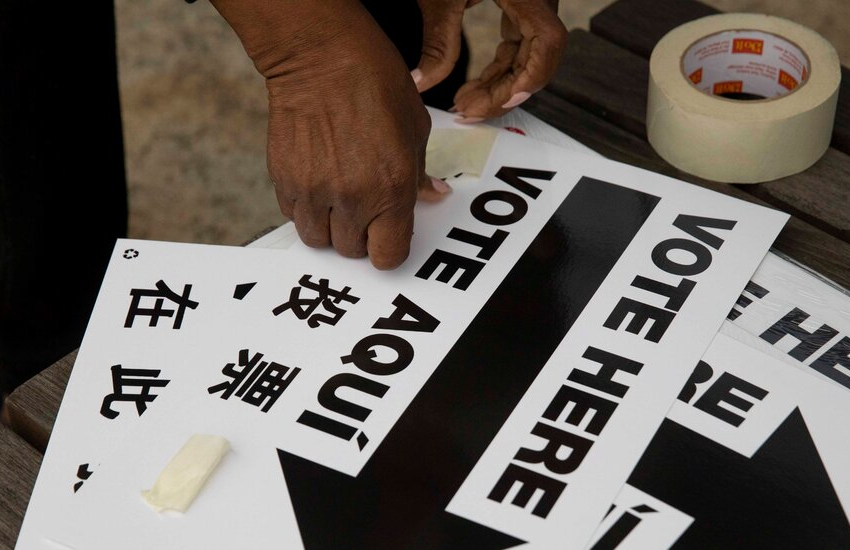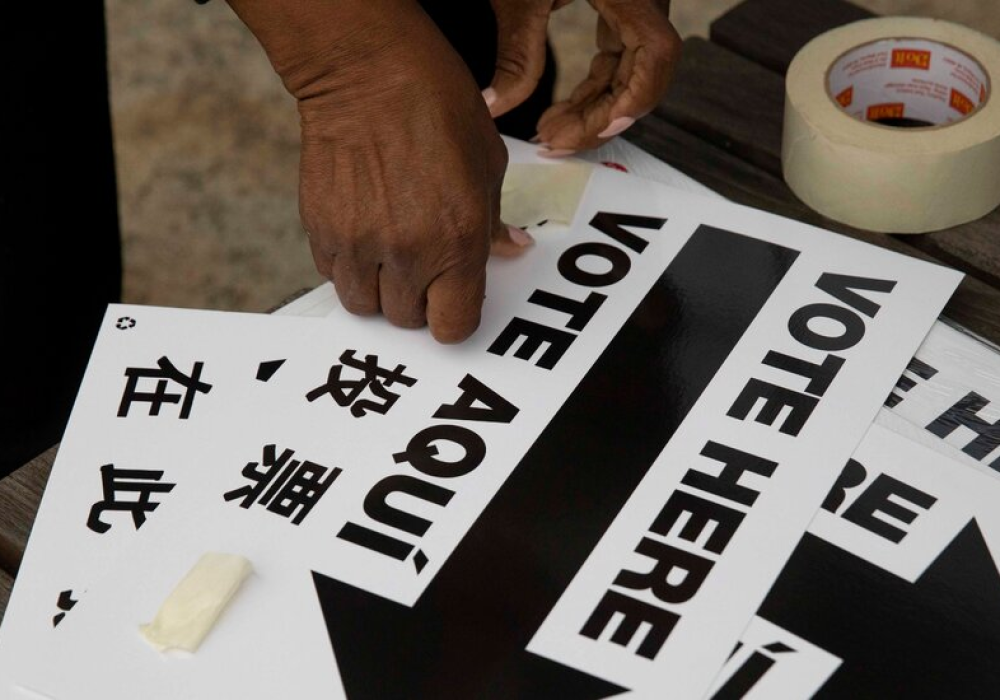The independent commission created to strip politics from New York’s redistricting process veered toward collapse on Monday, as the same partisan forces the panel was designed to circumvent threatened to undo it.
With time running out, the panel’s Republican and Democratic members bitterly conceded during a virtual meeting that they could not reach consensus on a single set of maps to determine congressional and state legislative districts for the next decade. Instead, they voted to send two dueling, nonbinding proposals to Albany for consideration.
Lawmakers in the Democratic-led State Legislature could still adopt one of the proposals or send them back to the commission for further revision. But with the commission deadlocked, another outcome appeared increasingly likely: Eight years after New Yorkers voted to take redistricting out of the hands of politicians, the politicians are poised to wrest it back.
Indeed, Democrats in Washington and Albany have been quietly planning for just that eventuality for months, even as the commission, which held two dozen public hearings last year and was granted a $4 million budget, crowed about the possibility of finding agreement. The political stakes, and potential gains for Democrats, are staggeringly high.
With Democrats battling nationally to fend off a Republican takeover of the House of Representatives this November, New York offers perhaps the single best opportunity for the party to use its unified control of a large blue state to flip a handful of congressional seats by drawing itself more favorable lines, with as many as half a dozen seats hanging in the balance.
New York Democrats could also use the process to try to shore up their commanding majorities in the State Assembly and State Senate, where Republicans are optimistic about mounting an aggressive campaign to reclaim territory lost in blue waves in 2018 and 2020.
State Senator Michael Gianaris, a Queens Democrat who is one of the leaders of the legislative task force that would draw the maps if the State Assembly and State Senate reject the commission’s proposals, said on Monday that lawmakers would begin reviewing the maps and “move expeditiously given the very tight political calendar.” They could vote to approve or reject the initial plans as early as next week.
Redistricting at a Glance
Every 10 years, each state in the U.S is required to redraw the boundaries of their congressional and state legislative districts in a process known as redistricting.
The window is exceedingly narrow. New York trails many other states in adopting new maps as part of the once-in-a-decade redistricting process and must reach a final conclusion by mid-to-late February. More than half of states have already completed their new maps, and Republicans are on track for a modest net gain in seats nationally.
If New York lawmakers fail to reach an agreement by next month, the courts could step in to take over the process, as they did during the last redistricting cycle. The courts would be likely to appoint a special master to redraw the district lines.
Political analysts and party leaders in Washington expect Democrats, who control supermajorities in Albany and the governorship, to reject both initial map sets that commissioners proposed on Monday and push for more favorable lines.
“If Democrats in Albany think the votes are there to pass what they want, it’s hard to see why they would take anything the commission does seriously,” said Dave Wasserman, a national elections analyst with the Cook Political Report.
Mr. Wasserman said that even the Democratic commissioners’ proposal for the state’s 26 congressional districts would leave as many as nine districts in play for possible Republican victories in this fall’s midterm elections, a bad result for Democrats in a deep blue state. A more aggressive gerrymander by the Legislature could limit Republicans to just three or so seats — and none in New York City.
The current congressional delegation in the state consists of 19 Democrats and eight Republicans; New York will lose one seat in the next election cycle.
In a sign that New York’s maps could quickly become a national flash point, a new left-leaning federal super PAC sent out a statement on Monday urging Democrats to ignore the concerns of incumbents and adopt maps with “the greatest chance of expanding our majority and defeating radical Republicans aligned with violence, hatred and sedition.”
The group, called No Surrender NY, was created last year by Tom Watson, a progressive consultant, and Shannon Powell, a former journalist and activist, but has yet to disclose any funders.
Voters adopted an amendment to the state Constitution to create the redistricting commission in 2014, ostensibly to remove politicians from the mapmaking process and try to force bipartisan consensus around the lines that determine congressional, Assembly and State Senate districts.
The current redistricting cycle is the first to take place since the amendment was adopted.
But the commission had struggled since its inception to transcend partisanship. It was supposed to release a set of draft maps in September and gather feedback on them in hearings across the state. Instead, Republican and Democratic members put out their own competing maps.
Understand How U.S. Redistricting Works
What is redistricting? It’s the redrawing of the boundaries of congressional and state legislative districts. It happens every 10 years, after the census, to reflect changes in population.
How does it work? The census dictates how many seats in Congress each state will get. Mapmakers then work to ensure that a state’s districts all have roughly the same number of residents, to ensure equal representation in the House.
Who draws the new maps? Each state has its own process. Eleven states leave the mapmaking to an outside panel. But most — 39 states — have state lawmakers draw the new maps for Congress.
If state legislators can draw their own districts, won’t they be biased? Yes. Partisan mapmakers often move district lines — subtly or egregiously — to cluster voters in a way that advances a political goal. This is called gerrymandering.
Is gerrymandering legal? Yes and no. In 2019, the Supreme Court ruled that the federal courts have no role to play in blocking partisan gerrymanders. However, the court left intact parts of the Voting Rights Act that prohibit racial or ethnic gerrymandering.
The commissioners made substantial progress bridging the gulf in private negotiations in recent weeks, according to people involved in the talks, but they could not reconcile key differences that would have affected the partisan tilt of some of the proposed districts.
Many of the areas of disagreement were predictable. On the congressional map, for example, Democrats proposed adding more of left-leaning Brooklyn to the Staten Island-based district held by Representative Nicole Malliotakis, a Republican. The two parties also differed over how to break up portions of Queens and Long Island, proposing alternatives that would have shaded them bluer and redder, respectively.
In their fractious meeting on Monday, which was streamed live for the public, both sides sought to blame the other party for the breakdown.
“I did not join this commission to allow my Republican colleagues to hold hostage the hopes of New York’s most disadvantaged voters in an effort to regain G.O.P. majorities,” said David Imamura, the Democratic appointee who chairs the panel. “I joined this commission to draw fair maps that reflect the public interest, and it is the Democratic maps that achieve that goal, not the Republican ones.”
Jack Martins, his Republican counterpart, vehemently disagreed, accusing Democrats of walking away from a potential deal out of partisan interest.
“To say that Republicans somehow failed to do their part or say that we failed to put together a map is just untrue, and frankly you know it,” he said.
But good governance organizations and advocates of underrepresented demographic groups said the issue was larger than individual commissioners’ motives. They have argued that the panel was never truly independent and was destined to fail from the start because of its rules and the partisan mechanism for appointing its members.
“This is what happens when a so-called independent commission is created with its members split evenly along party lines, with no additional nonpartisan commission members to break a tie,” said Elizabeth OuYang, who coordinates a campaign by APA VOICE Redistricting Task Force, a coalition of Asian American advocacy groups, to win greater representation in the new maps.
In a sign of where the process is now headed, Ms. OuYang and other activists spent Monday afternoon lobbying Gov. Kathy Hochul and the State Legislature, not the commission, to adopt their ideas.










